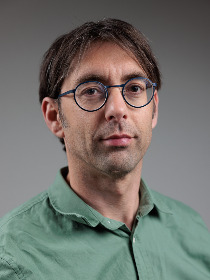T.C.A. (Tymon) de Haas, PhD

a complete overview curent and conluded projects can be found here:
https://www.universiteitleiden.nl/en/staffmembers/tymon-de-haas/publications#tab-1
Currenlty, these are my three main projects:
the environmental impact of early Roman expansion
Land division systems or centuriations are arguably the most impressive and enduring manifestations of early Roman Imperialism, and play an important role in traditional models of Imperialism. But although many centuriations have been reconstructed, their chronological connection to early Roman expansion and their presumed impact on landscape and environment have hardly been studied archaeologically. Consequently, their role in early Roman expansion is still debated.
This project aims to explore the environmental impact of early Roman expansion by developing an integrated geo-archaeological approach to study centuriations. In collaboration with colleagues of the Universities of Melbourne, Amsterdam and Groningen I conduct an initial programme of manual coring aimed at the dating and paleo-ecological sampling of the fills of the well-preserved traces (ditches and canals) of a centuration in the Pontine Marsh (central Italy).
The research, to be followed up with more extensive field research over the next years, will result in a reconstruction of settlement, land use and vegetation patterns in this former marsh. In a subsequent phase, the project will also be expanded to other centuriations in Italy and the wider Mediterranean. This will contribute to a better understanding of the environmental changes brought about by Roman expansion in Mediterranean landscapes.
The Rome Hinterland Project
In the project “integrating field survey data for Rome’s Suburbium”, members of three large, long-running archaeological field survey projects and dr. Willem Jongman (University of Groningen) have joined forces with the aim of advancing our understanding of the changing socio-economic impact of Rome on its hinterland. In concreto, the project aims to integrate the extensive databases of the Suburbium Project carried out by the Università di Roma la Sapienza, the Tiber Valley Project carried out by the British School in Rome and the Pontine Region Project, an on-going project by the Universities of Groningen, Melbourne and Leiden.
The project is currently working on the creation of an overarching database structure that allows us to query all three databases combined. The next steps we will take are, first, the use of this database for various spatiotemporal analyses; and second, t expand the scope of the database to other surveys in Italy and the wider Mediterranean, ultimately building a powerful tool to enable large scale comparative analyses.
FAIR Surveys / SEMAFORA
Dozens of field walking surveys take place every year across the Mediterranean, using a wide range of approaches. Researchers have long expressed the desire to conduct comparative and complementary analyses across these surveys, but have so far been frustrated by the lack of availability of underlying datasets. Moreover, because of a lack of methodological standardization, the few datasets that are available (for example through ADS or DANS-Easy) exhibit many (often undocumented) differences that form a major obstacle to comparative analyses.
This project, initiated by Martijn van Leusen and Tymon de Haas in 2016, aims to contribute to the improvement of documentation and archiving standards for systematic Mediterranean archaeological field survey, with the longer term prospect of enhancing the potential for comparative analysis of such datasets.
The archiving of survey projects at repositories such as DANS-EdNA in the Netherlands, and ADS in the United Kingdom, has presented PI's with the problem that the archive's rules allow the deposition of datasets that are not sufficiently documented, placing in serious doubt the idea that such archived data should be re-usable in future research. In the (digital) archiving world, the rule is that archives should be FAIR: Findable (i.e. structured metadata about them should be available online), Accessible (it must be possible to obtain the archives themselves), Interoperable (they must be in a format that can be read and interpreted), and Re-usable (the meaning, scope, and limitations of the data in the archives must be made clear).
In 2015, Dr Martijn van Leusen (University of Groningen) and I began to investigate a solution called CRM (Conceptual Reference Modelling) to both of these problems. CRM can be used to explicitly and systematically document and describe all relevant aspects of a survey dataset, so that if it is placed in an archive like DANS, it will comply with the FAIR principles; it can also provide a unified description system that, if applied by other survey PI's, will allow the comparison and merging of survey datasets. The FAIR Surveys Project began in 2016 with the help of a DANS/KNAW 'small data project' grant, which was used to draft and test a CRM for survey datasets; this is now being further developed within the SEMAFORA project in collaboration with Delving and Takin.solutions to produce a formally recognized archaeological extension to the CIDOC CRM, and to build a software toolset that will allow survey PI's to 'map' their databases and transform these into fully FAIR and CRM-compliant datasets that can be published as Linked Open Data.
